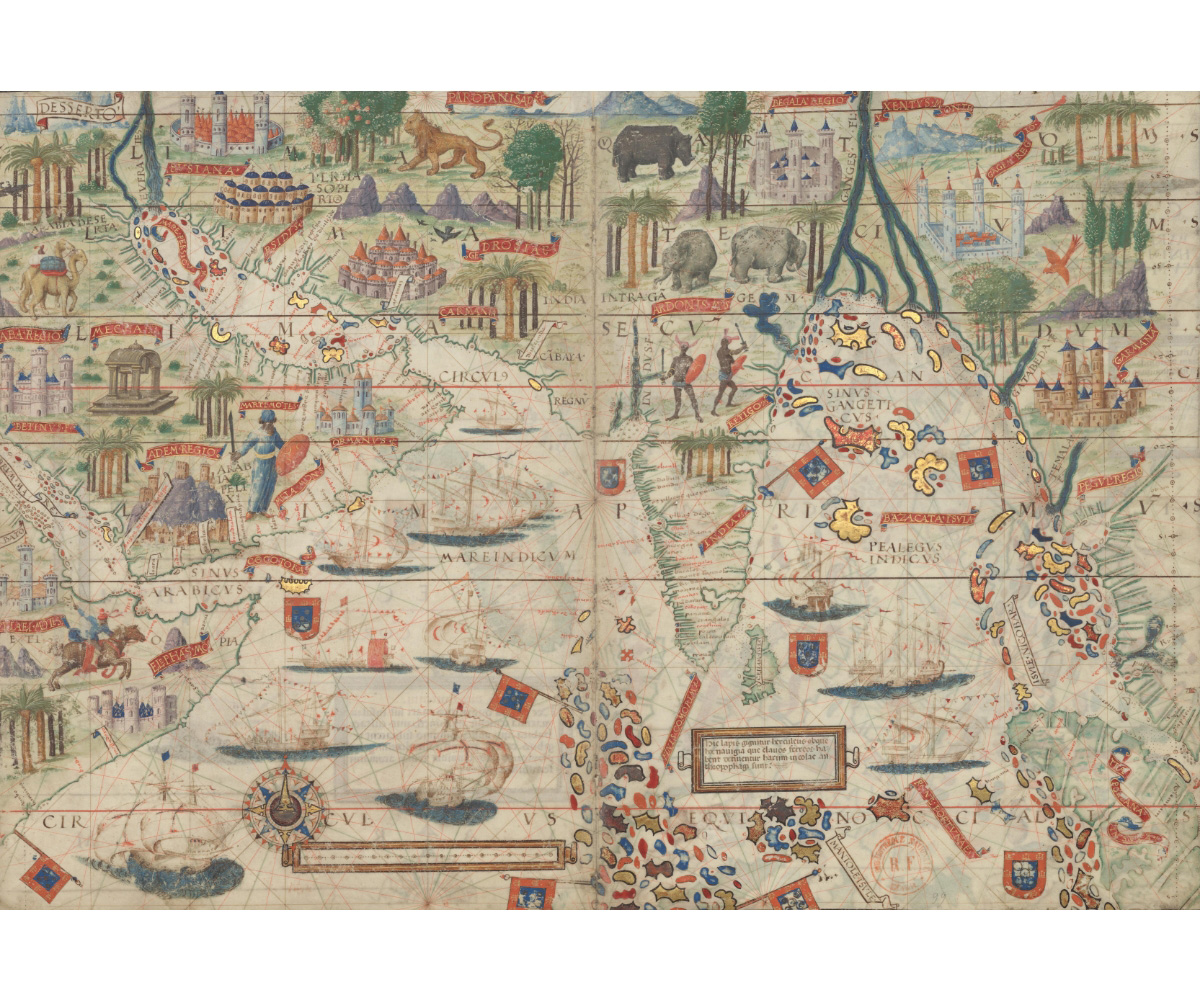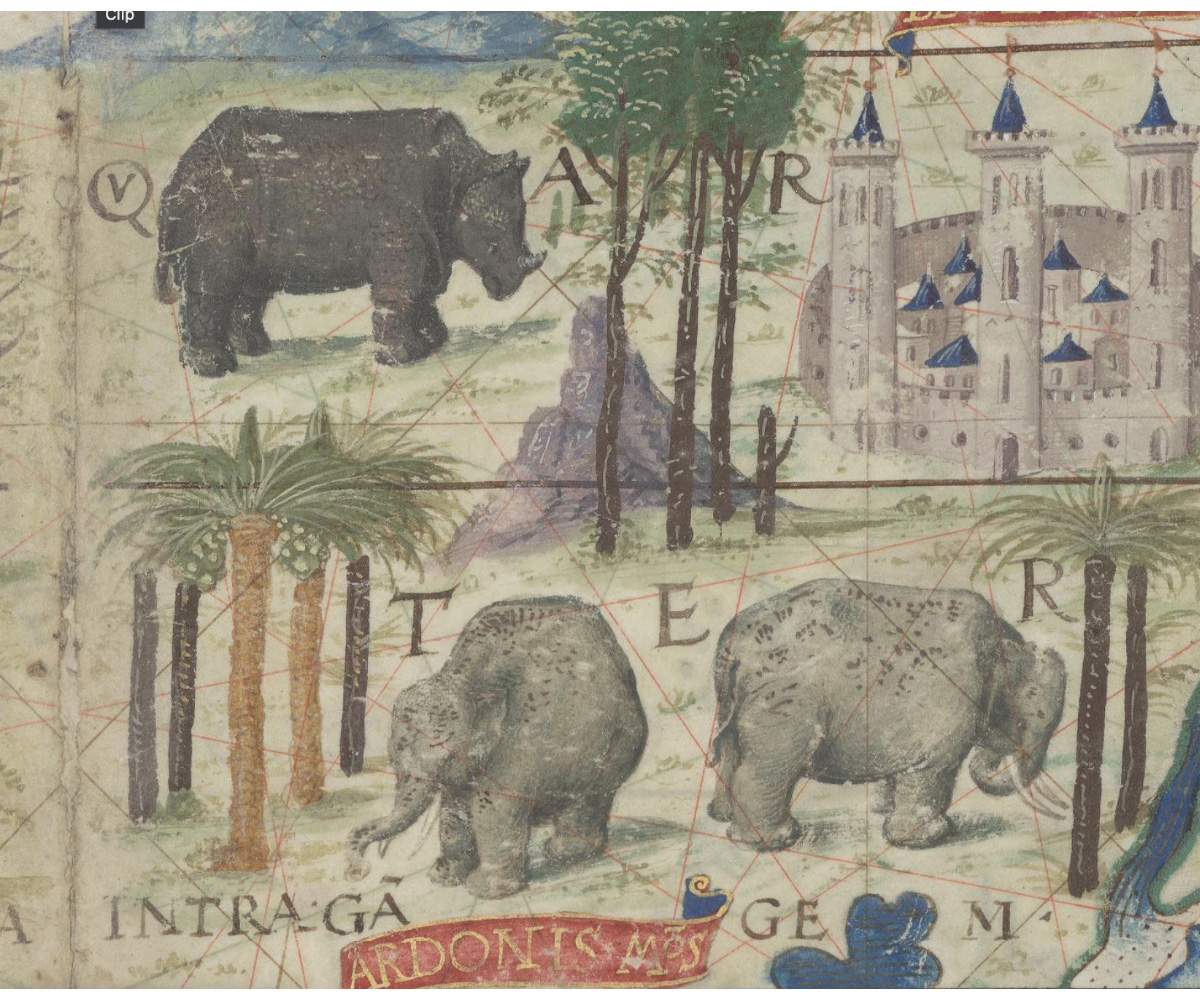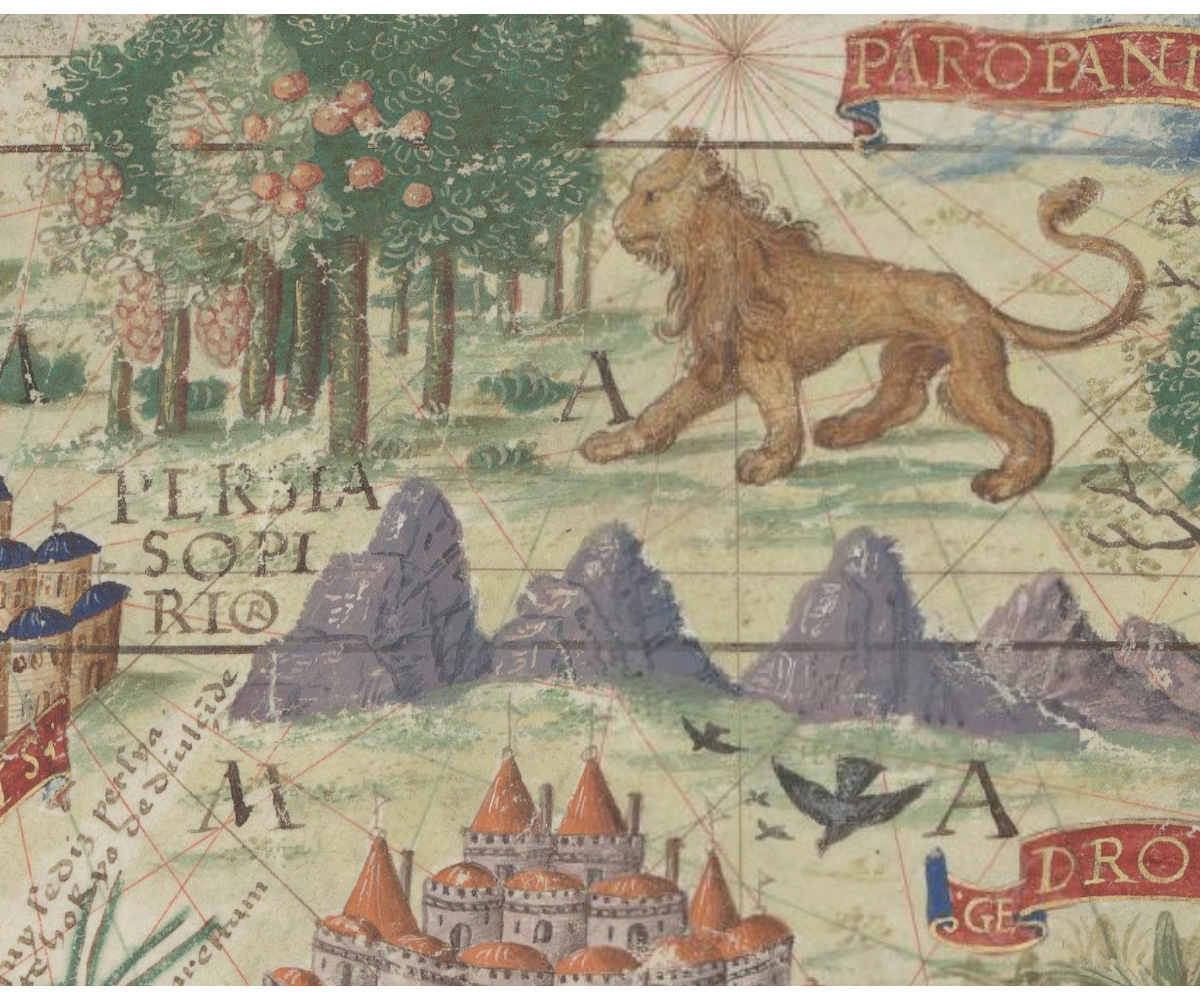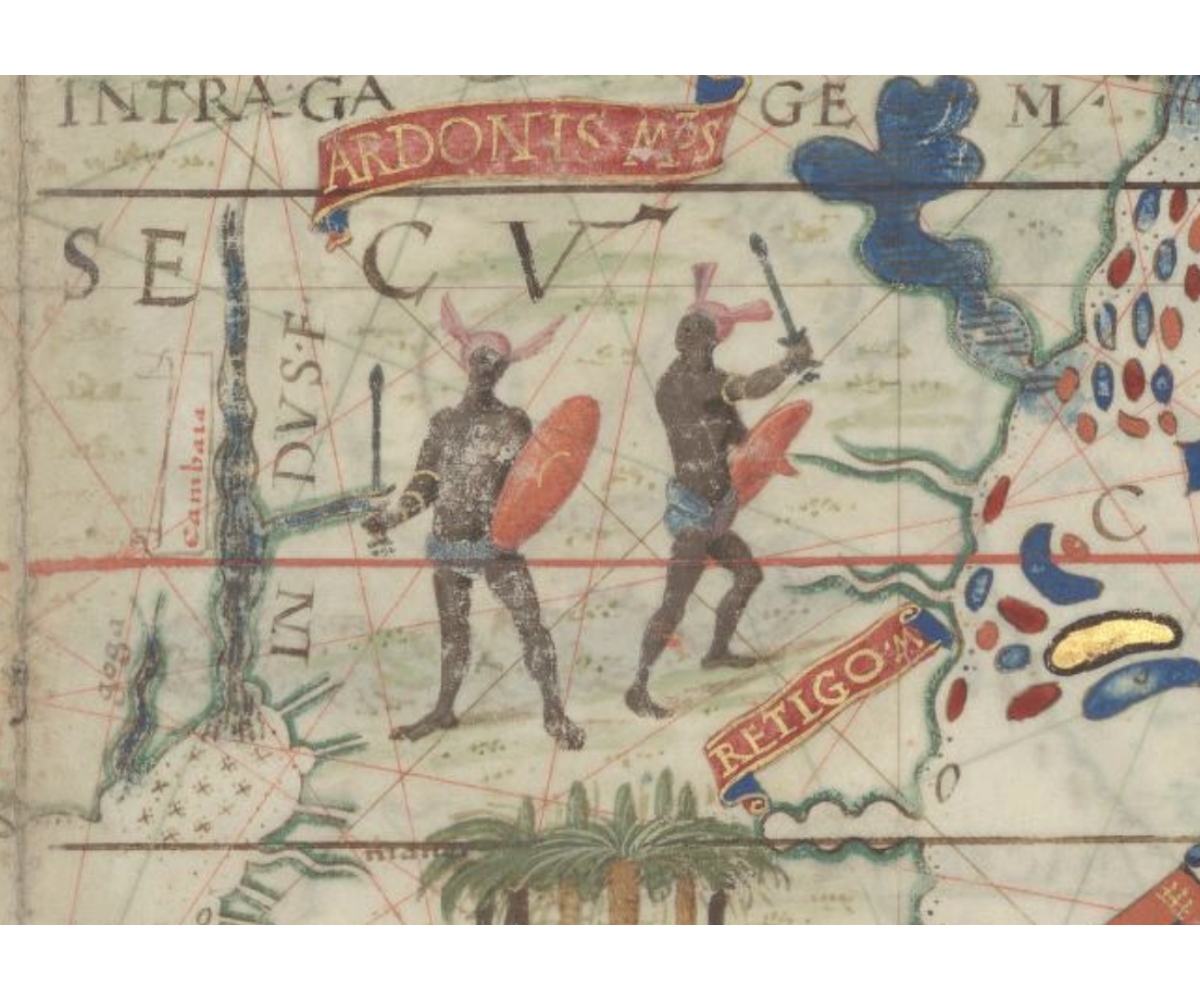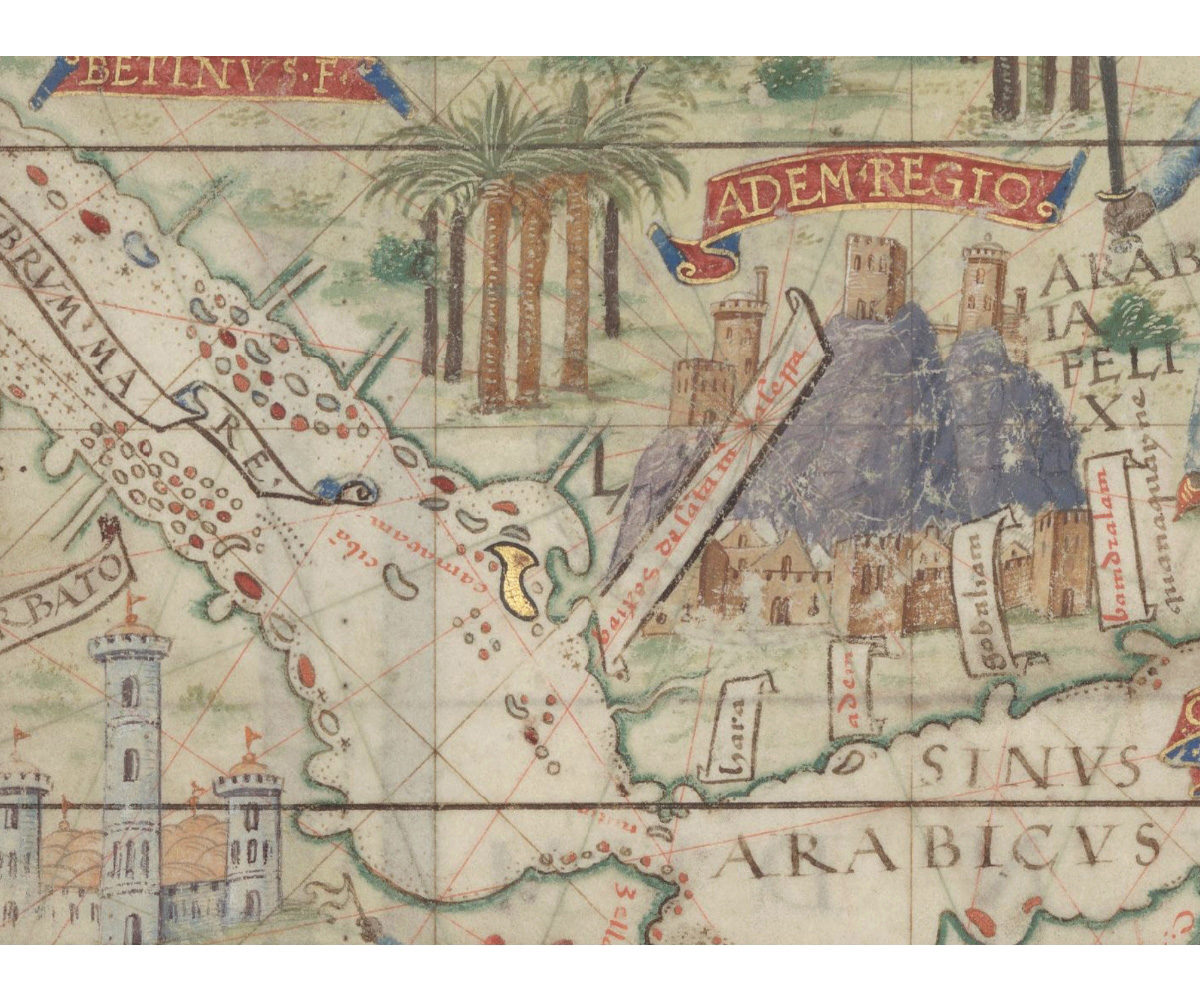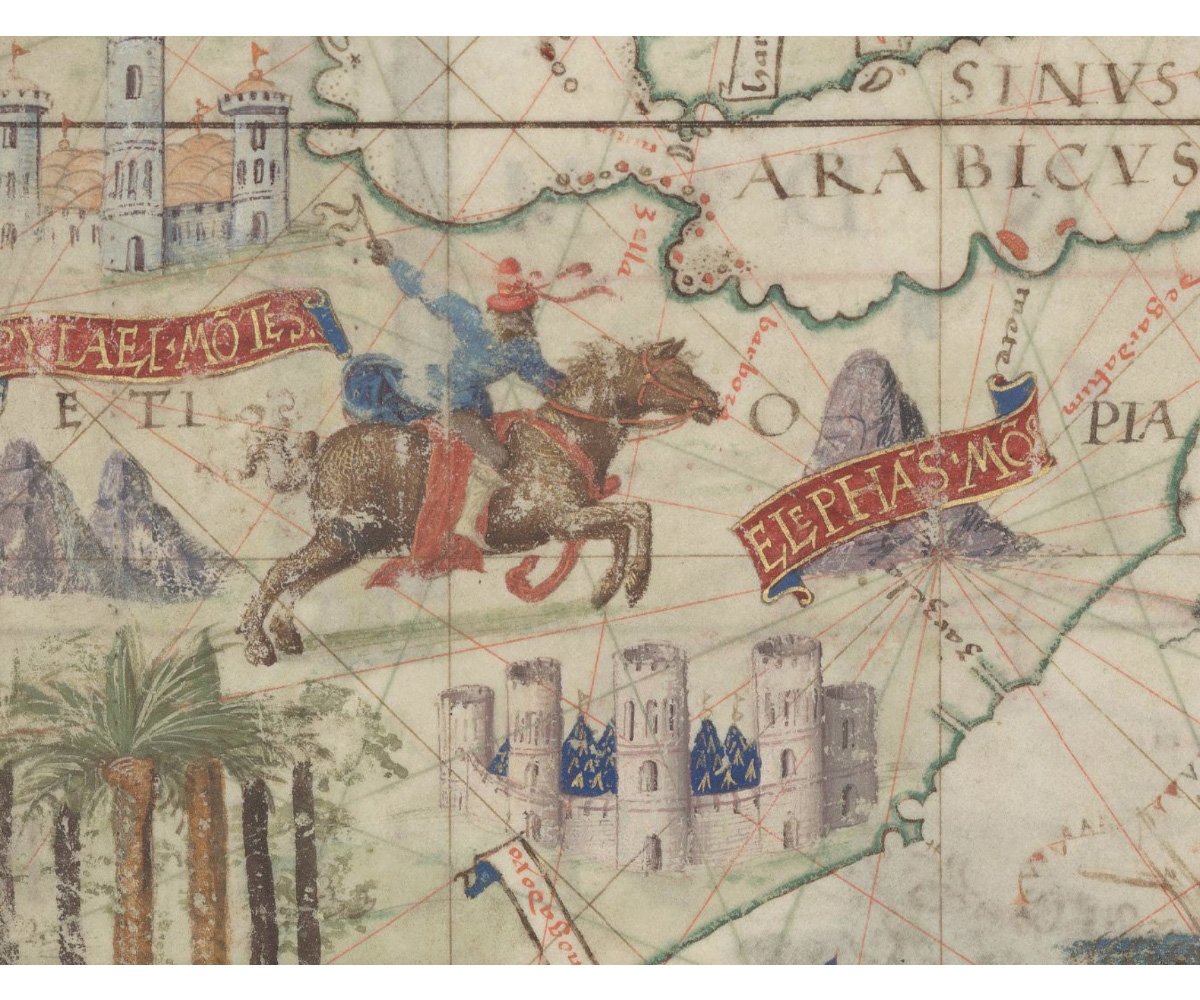PERSPECTIVES
Trade, Power, Imagination: A 16th Century Portuguese Atlas
In 1519, three map makers — Lopo Homem, Pedro Reinal and Jorge Reinal — along with a miniaturist, Antonio de Holanda, collaborated to create a set of eight maps for the then king of Portugal, Manuel I. Collectively known as the Miller Atlas, or the Lopo Homem-Reinéis Atlas, the maps illustrate Portuguese cartographic knowledge; imperial power; and their colonisation of the Indian Ocean. Flourishes of marvels and fantasies in the vein of medieval and Renaissance cartographic traditions can be found in its depictions of parts of Europe, Asia, the newly discovered Americas, the Atlantic Ocean, the Indian Ocean, the China Seas, and the Mediterranean Sea. A colourful plethora of castles, towns, people, flora and fauna, sits beside toponyms, cartouches, coastlines, and rhumb lines.
Holanda, who illustrated the Miller Atlas, had worked on multiple manuscript illuminations and Books of Hours. These texts, considered to be ‘medieval bestsellers’, were luxury items that facilitated private devotion for the non-ordained, and contained miniature scenes from the lives of Jesus Christ, the Virgin Mary, and different saints. His paintings in these Books of Hours are educative, decorative, and iconographic, with a tinge of exotic detail. Consider, for instance, his Rest on the Flight to Egypt in the Hours Book of Manuel I. We see the Virgin Mary and the infant Jesus in the centre of the image, with Joseph on the left and a group of colourful angels on the right and at top of the image. The illumination contains scenes from Egyptian life as António envisioned them — camels, elephants, tents, and palm trees adding both a realistic and simultaneously fantastical element to the portrayal by spatially distorting it.
Such pictorial icons are also present in the Miller Atlas. The recto of Folio 3 contains a breathtaking amount of visual detail. By way of geographical coverage, it contains a rough outline of the Indian Peninsula with Arabia, the Red Sea and the Persian Gulf on the left; and the Nicobar Islands and parts of Sumatra on the right. The Ocean is crowded with ships that bear either the Ottoman crescent or the Christian cross, alongside a dense cluster of heraldic flags with the Portuguese coat of arms. The shimmering gold-leaf that plates the islands catches the eye — adding to the famed mercantile prestige of the South East Asian Spice Islands. Indeed, Holanda’s use of gold-leaf intensifies, with a passionate fervour, on the verso of the same folio. Here we see the labyrinthine Moluccas, also known as the Maluku islands, which had recently been conquered by the Portuguese for their rich reserves of nutmeg, mace, and cloves.
The number of Portuguese flags in the Indian Ocean conveys the beginnings of Portugal’s colonial enterprise. Red is used to indicate Portuguese ownership of multiple territories along India’s southern coastline — Goa, Mamgalor (Mangalore), Cannanor (Cannanore), Calecut (Calicut), Couchim (Cochin). But why is the coast so well charted? Indeed, the more inward we move into the mainland, the fewer place-names we see.
On the one hand, these coastal cities allude to the cartographic genre of portolan charts, with their network of rhumb lines that help navigators move from one port to another. On the other hand, the extensive coverage of territories points toward the connection between mapping and colonialism. Cartography and power work here in a circular way. The map is needed to get a lay of these territories and once control of the region has been established, it is needed to mark these new possessions. What we see then is colonisation in progress — moving into the dense landmass at the centre from the more easily penetrable coasts.
The inland regions, uncharted at the time, are depicted as places of wonder. Instead of admitting to gaps in its geographical knowledge, the map shows us birds, camels, elephants, a lone rhino, mountain ranges, people clothed and unclothed. This remains consistent with Manuel I’s interest in exotic flourishes — evidenced by his famous gifting of a rhinoceros named Ganda to Pope Leo X. Here, we see the marvellous visions of a miniaturist who probably never set foot in Asia but who managed to create a fantasy, and a desire for it, in the minds of his contemporaries.
The extensive coverage of territories points toward the connection between mapping and colonialism, demonstrating how cartography and power are linked in a circular fashion.
Bibliography
Duzer, Chet Van. Horror Vacui: With Savage Pictures Fill their Gaps: On Cartographers’ Fears of Blank Spaces. Stanford Libraries. Accessed February 1, 2024. https://exhibits.stanford.edu/blrcc/feature/horror-vacui.
Library of Congress. “Nautical Atlas of the World (Miller Atlas).” Accessed July 10, 2023. https://www.loc.gov/resource/gdcwdl.wdl_18559/?sp=2&st=image.
Siebold, Jim. “The Atlas Miller.” My Old Maps.” Accessed July 10, 2023. https://www.myoldmaps.com/renaissance-maps-1490-1800/3291-the-miller-atlas-.pdf.
Stein, Wendy A. “The Book of Hours: A Medieval Bestseller.” The Met’s Heilbrunn Timeline of Art History. Accessed July 15, 2023. https://www.metmuseum.org/toah/hd/hour/hd_hour.htm.






